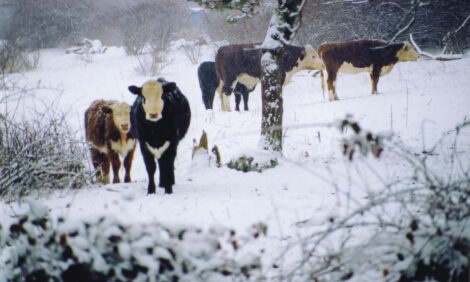



USDA trims 2025 beef output forecast as slaughter slows
Cattle prices hit record highs; imports up 13% year over year
The forecasts for US beef production are adjusted slightly downward for 2025 but fractionally higher for 2026, according to the US Department of Agriculture's Livestock, Dairy, and Poultry Outlook for September. In August and September, cattle prices set new record highs which prompted price projections to be raised in the second half of 2025 and carried forward into 2026. Beef imports in July were stronger than expected, climbing 13% from last year. The import forecast is raised for the second half of 2025, for a total annual volume that is expected to exceed last year by 16%. Beef exports were revised downward in 2025 and 2026 with annual declines of 12 and 4%, respectively.
Starting in late July and throughout August, weekly cattle slaughter slowed seasonally but to levels that were the lowest since 2015. Adjusting for one fewer slaughter day1 in 2025, August saw a 10% decline in cattle slaughter, the largest year-over-year decline for any month in 2025. Additionally, the number of steers and heifers slaughtered in August fell 4% month over month and 9 percent from August 2024, adjusted for slaughter days. This slow pace of slaughter is expected to impact the timing of marketings in the second half of the year and into early 2026.
The latest Cattle on Feed report, published by USDA, National Agricultural Statistics Service (NASS), estimated the August 1 inventory in feedlots with more than 1,000 head capacity at 10.922 million head, 1.6% lower than the 11.095 million head in the same month last year. Feedlot net placements in July were 6% lower year over year at 1.547 million head. Marketings in July totalled 1.749 million head, down almost 6% year over year. The year- over-year decline in marketings was largely in line with a 6% decline in federally inspected slaughter of steers and heifers in July.
Extrapolated from the five most recent Cattle on Feed reports, the percent of cattle on August 1 that have been on feed over 150 days is the largest since the report was first published in 1996. As shown in the chart below, further analysis suggests that there are 1.317 million head, or 12% of inventories, that were on feed for at least 180 days on August 1. In terms of total head on feed, this is nearly 60% higher than on August 1 last year and 8% more than in August 2020, the previous high for the month. Texas has the largest number of cattle on feed over 180 days, 15% more than in August 2024. However, Texas has the second- largest share of inventories that have been on feed for more than 180 days behind Iowa.
The mostly likely reason for steers and heifers in Texas to be spending more time on feed than a year ago is due to the lack of Mexican feeder cattle to backfill pens when cattle are marketed. Feedlot operations prefer to hold cattle on feed longer to heavier weights if cattle supplies are tight in an effort to not underutilise pen space. This trend appears unlikely to change soon, resulting in a relatively slow pace of marketings and carrying a higher share of market-ready steers and heifers on feed through the end of the year.
Based on estimated slaughter data through early September and expectations for marginally lower slaughter in the fourth quarter, the beef production outlook for 2025 is adjusted lower from last month by 100 million pounds to 25.826 billion pounds. The slower expected pace of marketings in the second half of 2025 is expected to push some fed cattle to be marketed in early 2026. That increase is partially offset by a slower expected pace of slaughter in the second half of 2026. As a result of these partially offsetting trends, the forecast for 2026 beef production is raised 20 million pounds, fractionally higher from last month at 25.490 billion pounds.



